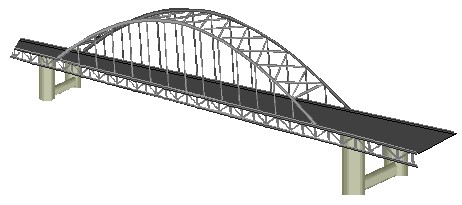 |
36th Annual
|
 |
36th Annual
|
Tips on Toothpick Bridge EngineeringGoal: To make a construction of toothpicks and glue that will weigh less than 85 grams, have a clear span of 56 cm, and will support a weight stacked on a 9" diameter wooden disk placed on top of the structure. Note from the rules that the winner is judged not on the total weight supported, but rather on the capacity of their bridge - weight supported/weight of the bridge. That means that if a bridge is very light and moderately strong, it can win over a stronger, heavier bridge. Gluing the toothpicks together can take time and is delicate work.
Lay out a sheet of wax paper, glue together several toothpicks to form
a base plane, and allow that to dry. Then glue members to the base plane
in order to create a space frame. In the past, many people have built flat bridges - mats of toothpicks only 2 or three layers deep, and containing no support shapes. These have never been successful. They bend under even a very small load and split. I strongly urge the students to create a bridge with some depth - use some method to create a support structure that transfers the weight from the middle of the bridge to the supports.
Top members need to be stronger than bottom members - when the load pushes down, the top goes into compression, bends and snaps. The bottom goes into tension. It just needs enough glue to keep it together. Ask your students if they can pull a toothpick apart as easily as they can push on them and break them. You might suggest the following shapes to your students:
You may want to look at a series of photos provided by students at Fosston, MN, High School. They show how several students built bridges that did very well in previous competitions. I would also suggest you look at the links to find information on bridges, trusses, etc. {Content} |